A LOOK BETWEEN THE THORNS - Scolymus hispanicus
Yesterday'short look between the thorns ended with the Pisaura mirabilis spider in its silky tent ... and right now, on the following photograph ...

... you can see the same kind of spider, a female again ... with the cocoon ...
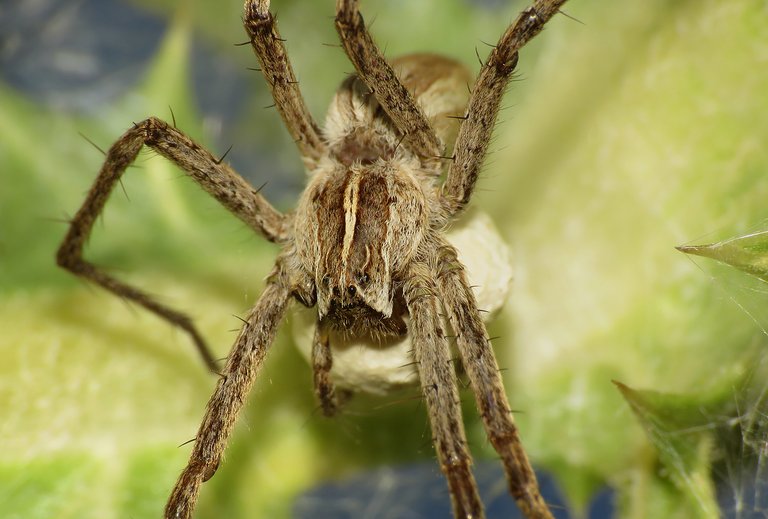
... but this time sheltered by the thorns of another plant ...

... Scolymus hispanicus ... known as Sikavatz in this region.
 (Enlargeable)
(Enlargeable)
The combination of dense thorns and abundant, nectar - rich flowers makes it attractive to a wide variety of insects. This minuscule Lady beetle covered with short hair ...
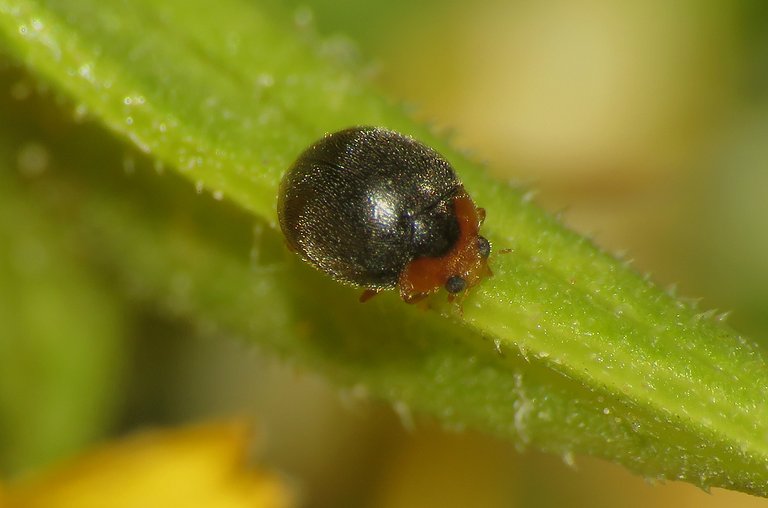
... the Scymnus auritus, feels at home in this thorny labyrinth ...

... and is not the only Lady beetle species that feels at home here. This is the, also very small,Psyllobora vigintiduopunctata, one of the very few species that don't prey on aphids and similar small insects, but feed on mildew instead.
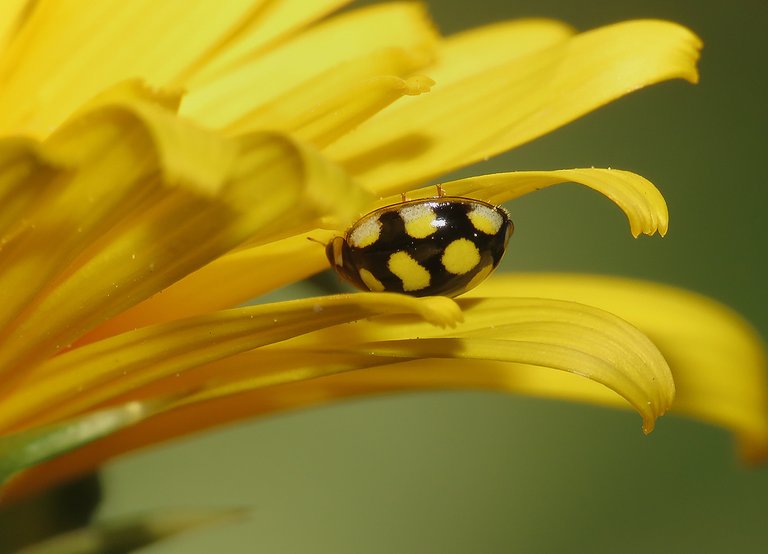
On this photograph, hiding among the vivid yellow petals of the Scolymus hispanicus flower, is the Oenopia lyncea. This one is slightly bigger than the previous two species, but still considerably smaller than the most common, archetypical Coccinella septempunctata, the typical Lady beetle from many children books and cartoons.
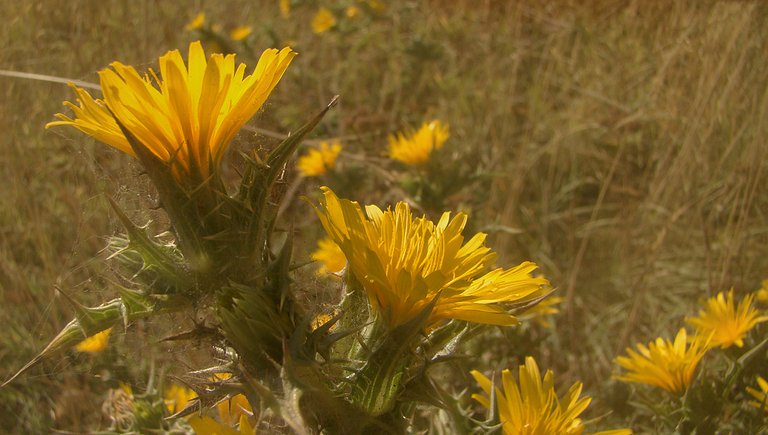
These yellow flowers are a very iconic part of the summer landscape, here in my area ...
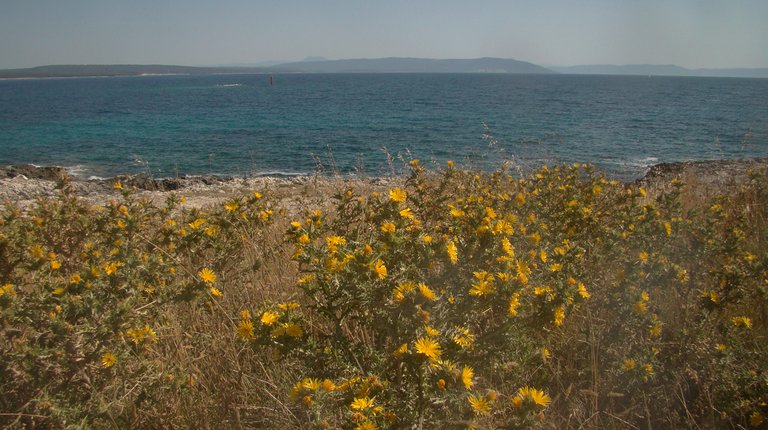
... especially on the stony terrain along the shoreline ...
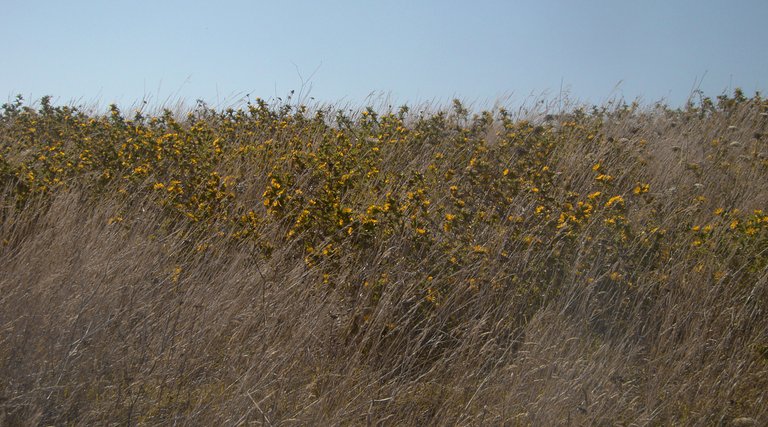
... and on the nearby coastal meadows, that get dry very early in the summer, especially on the windy side of the coast ...
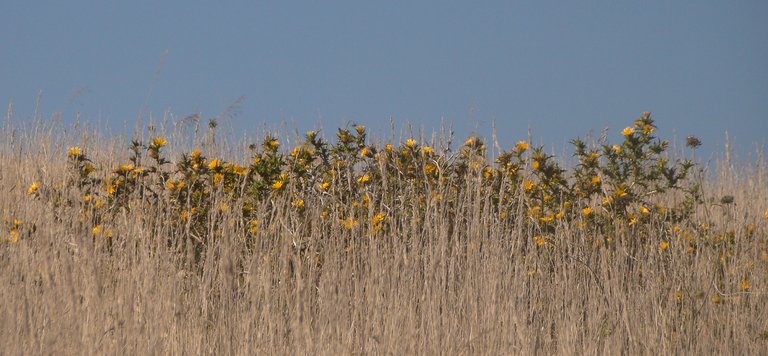
... and will look pretty boring without the summer decorations provided by the Scolymus hispanicus plant.
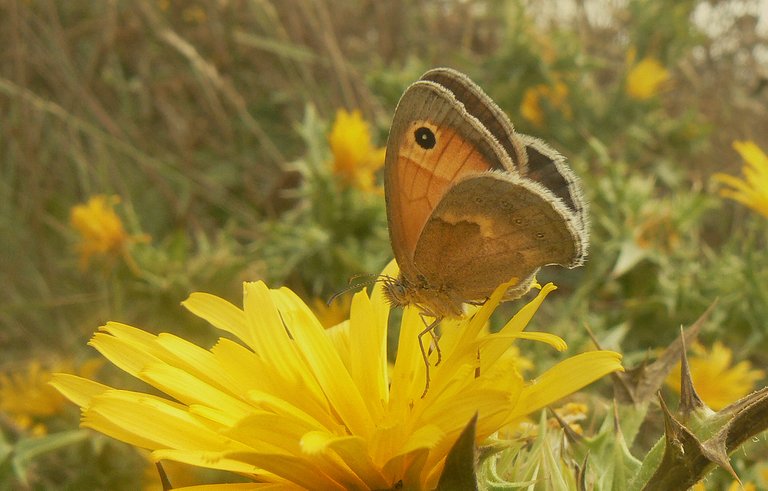
With many flowers around ... you can always see some butterflies on these fields ... like this Coenonympha pamphilus, ad example ...

... or the very common Cabbage white (Pieris rapae)
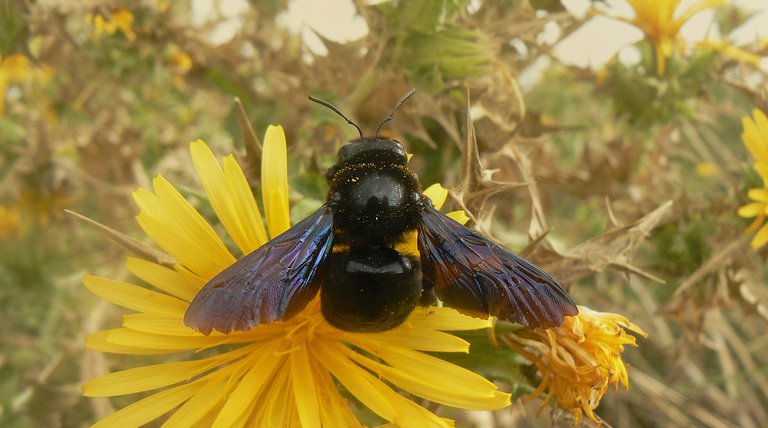
The big black carpenter bees with beautiful, shiny wings (Xylocopa violacea) are also present here in big numbers when this plant is in bloom. This is by far the largest bee here in the area, all the other local bees look like dwarfs compared to this species. They make their nests in dead wood, and since I have plenty of this material around my house, this species is a regular inhabitant of the microcosm of my lawn & garden.
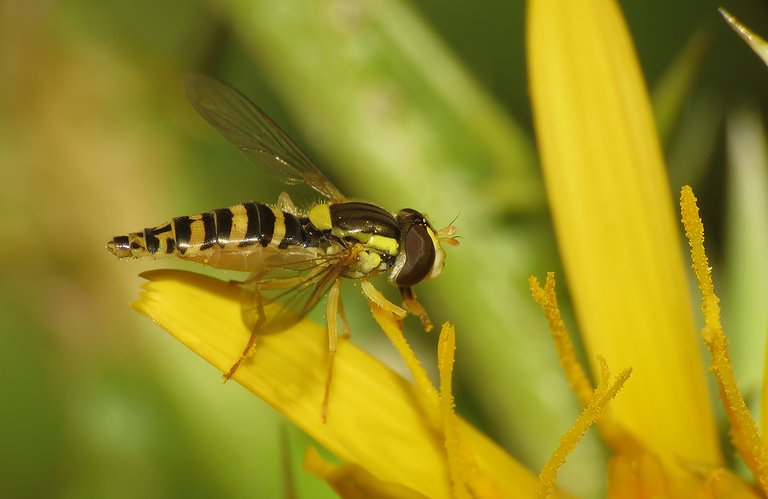
Just like the big bees and butterflies, various small Hover flies are also here for the nectar. There are quite a few similar looking flies present in the area, so I couldn't figure out the exact name of the species on this photograph.
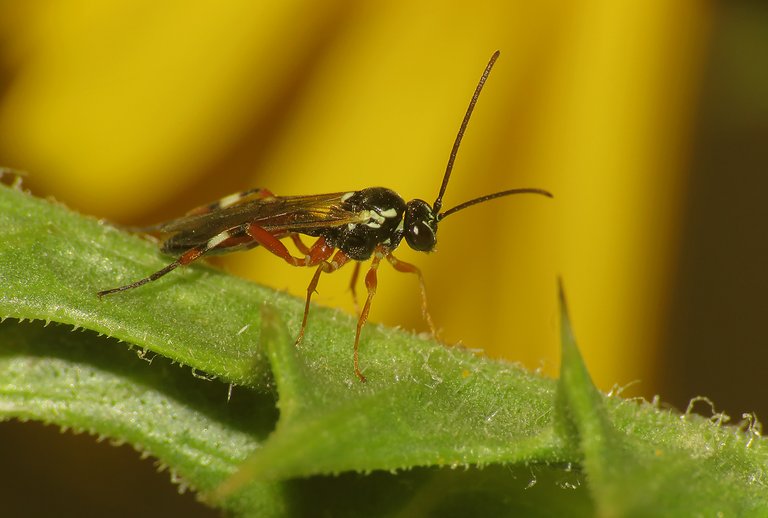
Minuscule wasps can also be regularly found on and around the flowers. I don't know the name of these species, I can't tell you information about their life or behavior, the only thing I can show you here - is how they took. This is a very small species ... but the one on the following picture ...
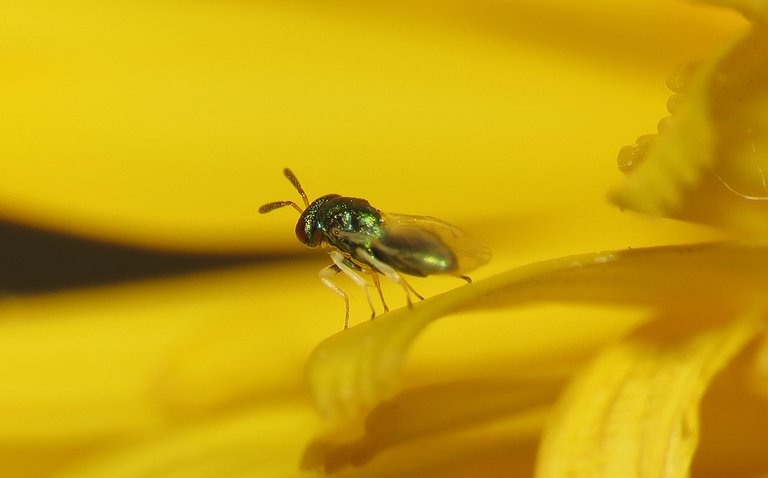
... is really minuscule ... and lovely, with a nice metallic shine.
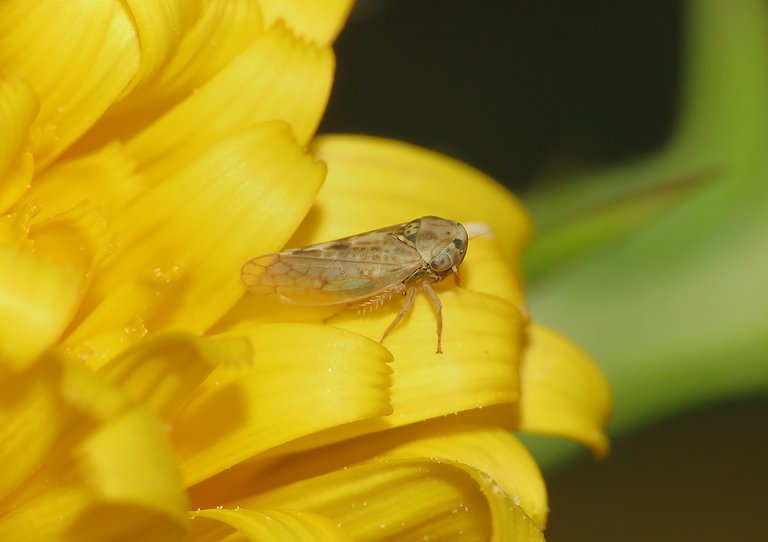
Various leafhoppers are also jumping around, there is a nice variety of species among them, which makes them a great subject for photography ...
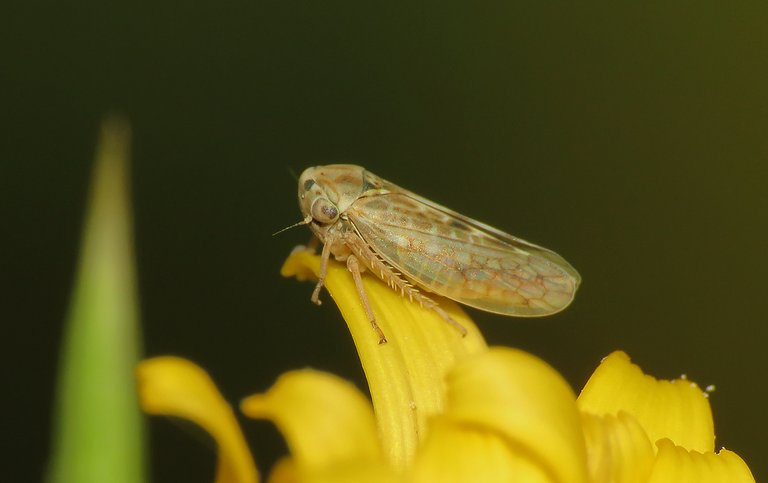
... but when it comes the time to write exactly what species is present on the shot, things get hard and tricky ... so I can't give you the exact name of this insect. It's a leafhopper, a cool looking leafhopper of some kind.
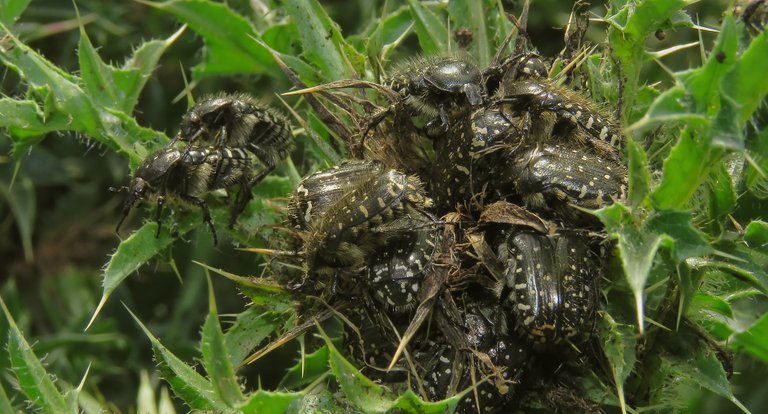 (Enlargeable)
(Enlargeable)
Mediterranean spotted chafers (Oxythyrea funesta) can be seen feeding on flowers during the summer, but before that, during the spring, they sometimes swarm when is time for mating. On this enlargeable photograph you can see a pretty big bunch of these beetles in their reproductive activities among the thorns.
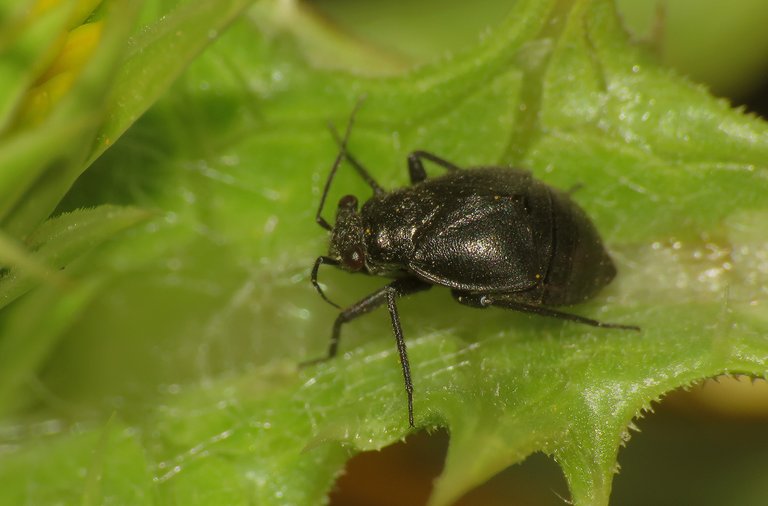
This small black nymph of some undefined bug, I mean I can't define it nor find out what species is this, is feeding on the sap of the plant while protected by its thorns.
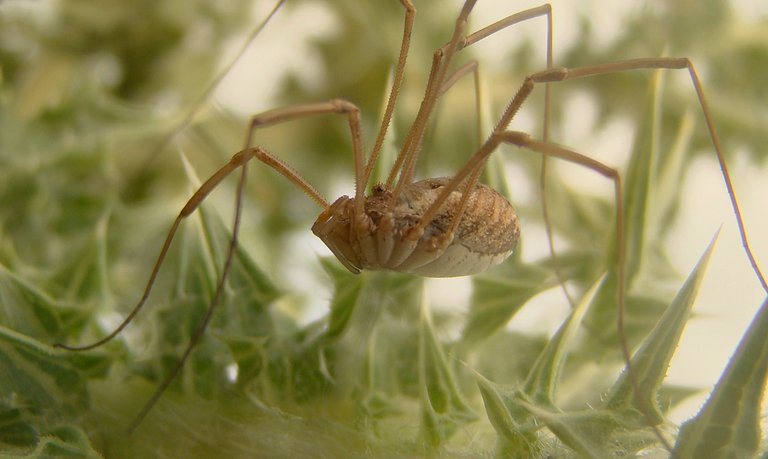
This Phalangium opilio arachnid is just passing by through the thorny labyrinth on many floors, made by resilient leaves of the Scolymus hispanicus plant. They also like to rest and hunt in this place, protected by the thorns.
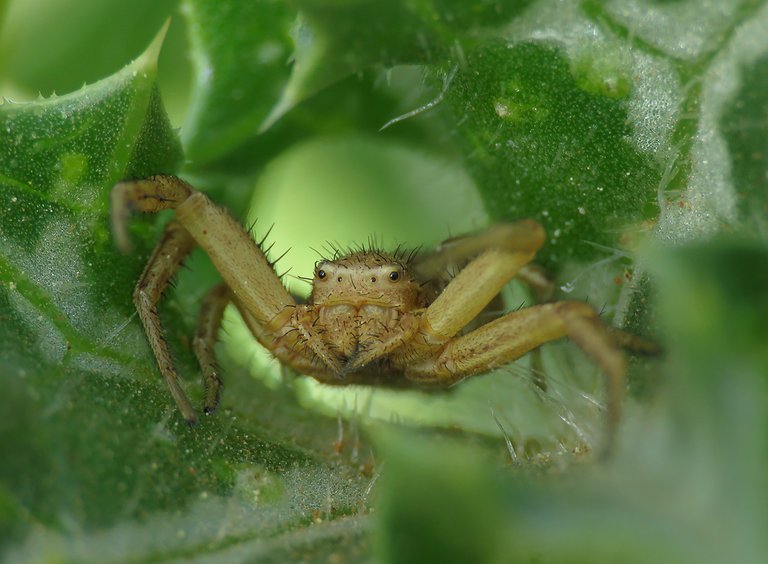
A crab spider (I don't know the exact species) is waiting in ambush, in the middle of the natural tunnel, made by the folded leaf.
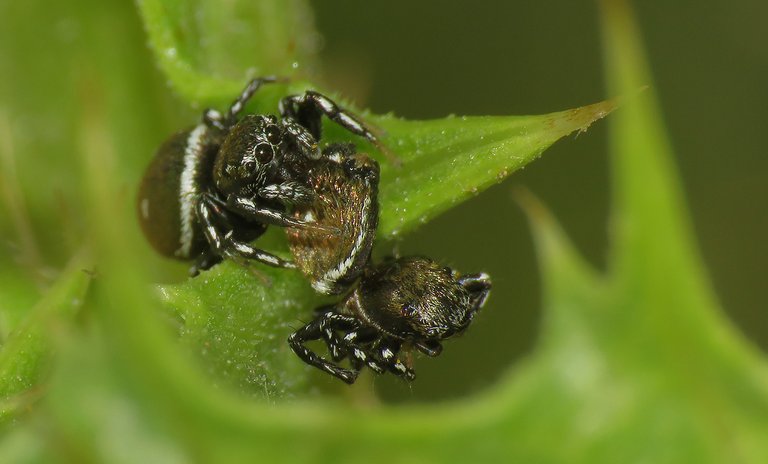
Here you can see another spider (I mean two spiders, to be exact) of a very different kind.

These are the Heliophanus kochii jumping spiders ...
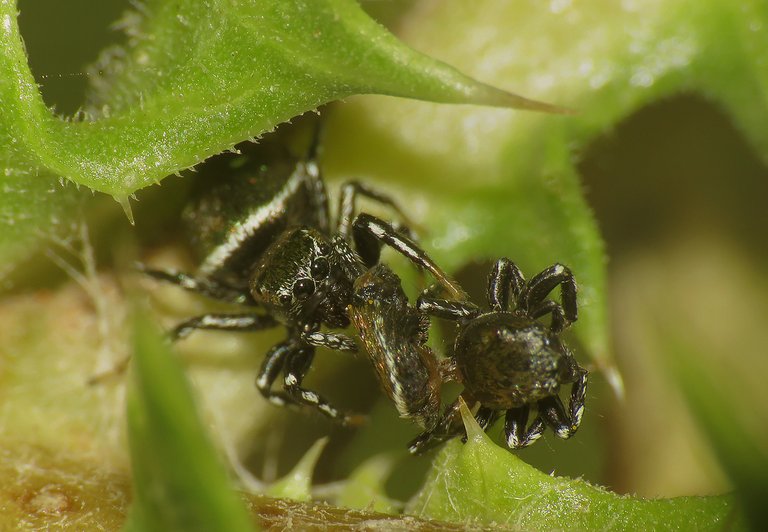
... and on these shots you can observe this species in an act of ordinary cannibalism.
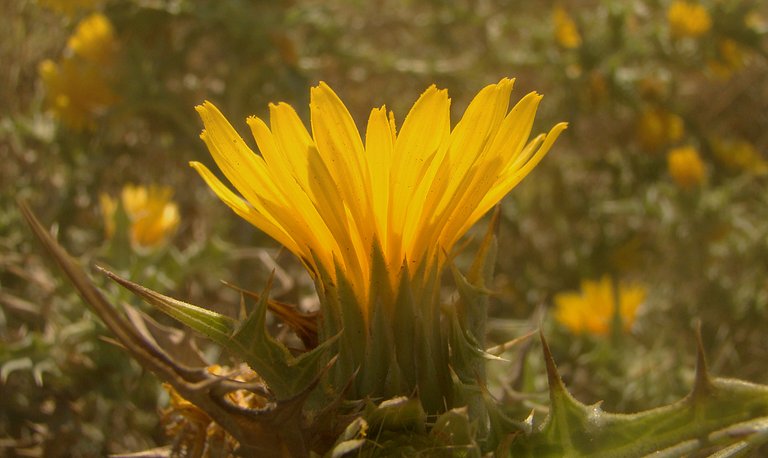
As the summer is slowly ending, the juicy flowers wither ...
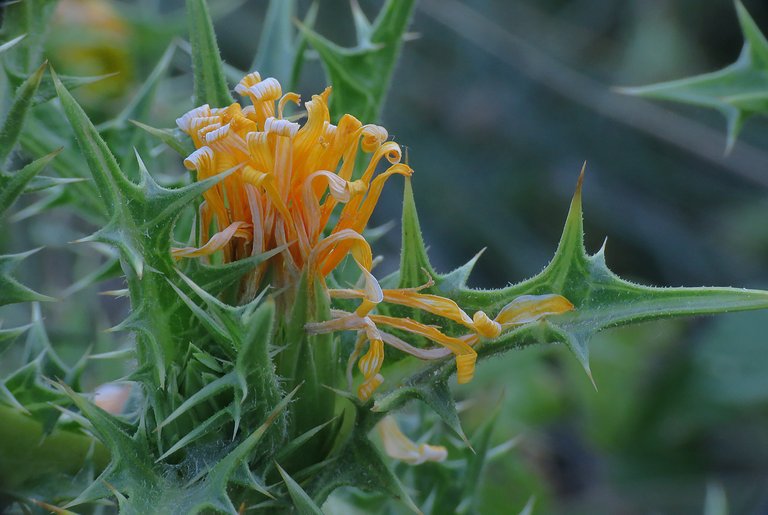
... petals are falling ...
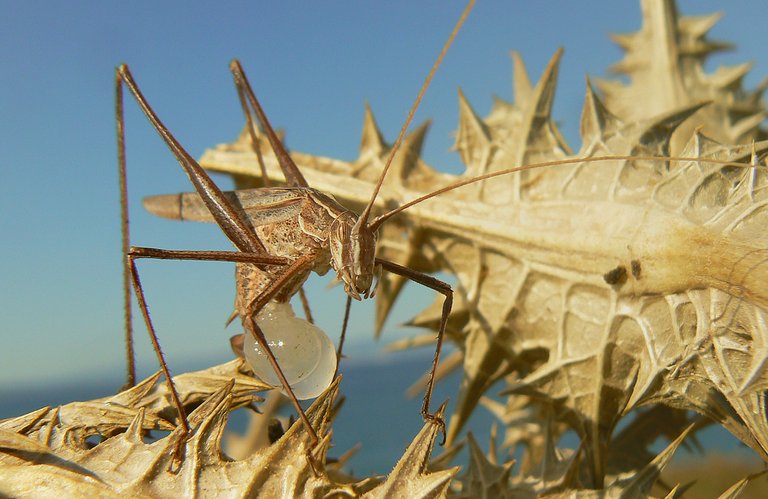
... and a month or so further along the timeline, in the first days of autumn, most of these plants will turn from green to brown and dry. On this photograph you can see the female of Tylopsis lilifolia cricket among the dried out thorns.
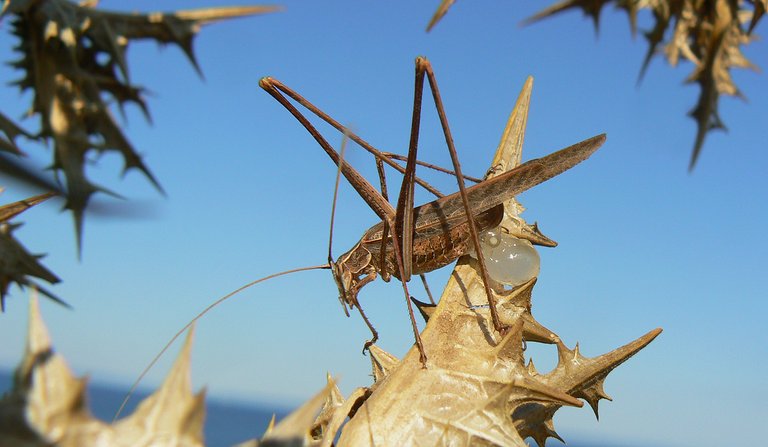
As in other Bush - cricket species, the male secretes the nutritive Spermatophylax, a gelatinous bolus to use as a nuptial gift during the mating time ... and as you can see on the following photograph ...
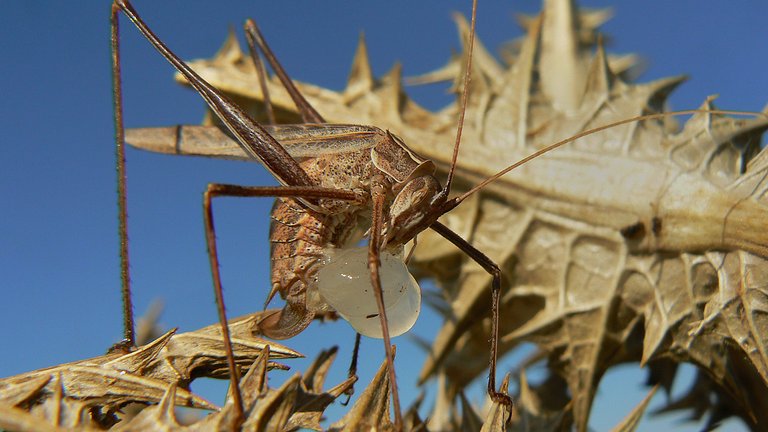
... the female find this highly nutritive thing very helpful during the energy consuming reproductive cycle, and therefore probably kind of delicious. And now ...
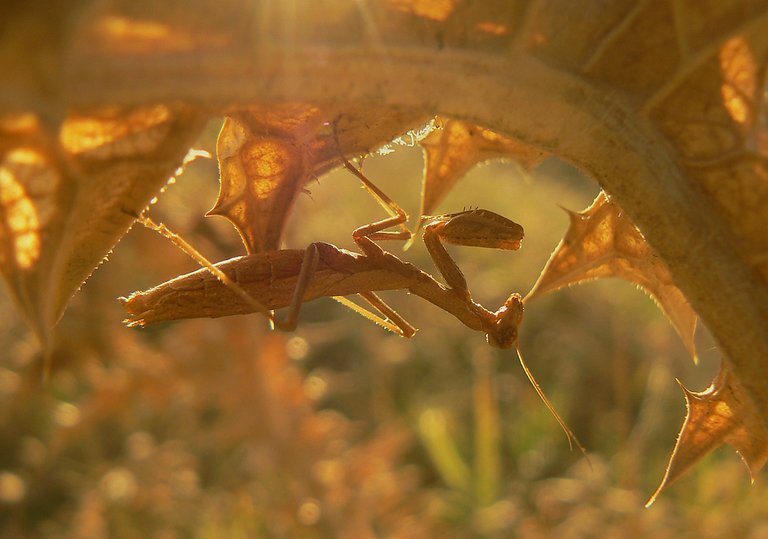
... with this closing shot, the young mantis underneath the dried out thorny leaf at the end of summer, is time to end this second look between the thorns. Hope you enjoyed this prickly walk through the local nature, here in my area.
As always in these posts on HIVE, all the photographs are my work.
This post was shared and voted inside the discord by the curators team of discovery-it
Join our community! hive-193212
Discovery-it is also a Witness, vote for us here
Delegate to us for passive income. Check our 80% fee-back Program
Oh wow, wonderful photography! Nice shots.
Thanks :)
Lets play the 'comment game'! :)
:D Juicy upvotes await the lucky winners
Those are wonderful shots, as always. I love the light in the last one in particular. It looks magical!
True, the warm light in the late afternoon, in autumn and during the last days of summer is especially beautiful.
Wponerful photos...
Thanks :)
All of these macros are amazing as always but the first shot of the cricket creating that weird bubble is just out of this world... Fascinating indeed!
True :) is like some SF alien biology going on
Haha exactly :)))
What is the name?
You mean the name of the plant? I don't know the common name in English. In Croatia is called Sikavatz and the scientific name is in the title, Scolymus hispanicus.
Have a look at his comments; he is just a spammer don't dignify him with a response.
Aha, OK. :) Thanks. The question really sounded strange, with not much sense in it. Now is clear why.
More spam.
Thanks for your contribution to the STEMsocial community. Feel free to join us on discord to get to know the rest of us!
Please consider supporting our funding proposal, approving our witness (@stem.witness) or delegating to the @stemsocial account (for some ROI).
Please consider using the STEMsocial app app and including @stemsocial as a beneficiary to get a stronger support.
Thank you